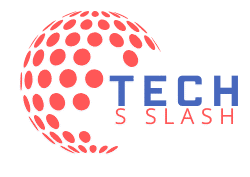Ever come across the phrase “AI Void Technologies” and found yourself scratching your head? You’re not alone. It sounds like something out of a science fiction novel, right? Maybe a black hole powered by artificial intelligence? But let’s peel back the layers and talk about what this could mean—and more importantly, why it’s worth paying attention to.
What Is AI Void Technologies?
To be honest, “AI Void Technologies” isn’t a widely recognized term—at least not yet. But let’s break it down.
- AI stands for Artificial Intelligence, the tech that mimics human thinking.
- A void usually refers to an absence or emptiness.
- Technologies are applied scientific tools or systems.
Put all that together, and you get a phrase that feels like it’s pointing to something futuristic—maybe a set of technologies that operate within “empty” or “unstructured” environments. In more grounded terms, it could refer to AI systems designed to work in data-sparse areas—places where there’s little guidance or training information. Think of it like a self-learning machine figuring things out in the dark.
Interesting, right?
Is This a Real Thing or Just a Cool-Sounding Concept?
While “AI Void Technologies” isn’t a mainstream label in the tech world yet, the concept behind it aligns with some very real trends. One big example is unsupervised learning—a branch of AI that doesn’t rely on labeled datasets. Instead, the AI explores and identifies patterns all on its own, often in environments where humans don’t provide step-by-step instructions.
Another similar direction is AI in space exploration or deep-ocean robotics—situations where you send a machine into a literal void, and it has to figure things out with little human help. In that context, “AI Void Technologies” actually makes a lot of sense.
So while you might not find a company with that exact name, the idea is very much alive and evolving.
Where Could This Go?
Let’s imagine a few use cases where “AI Void Technologies” could come to life:
- Autonomous drones are exploring unknown environments, like caves, volcanoes, or disaster zones.
- Spacecraft using AI to navigate asteroid belts without detailed maps or instructions.
- Self-improving software systems operating in industries that lack structured data, like early-stage startups or developing regions.
We’re talking about frontier tech here. This is AI moving beyond cushy labs and test environments into the messy, unpredictable real world.
Should We Be Concerned?
Anytime AI becomes more independent, there are valid reasons to raise eyebrows. After all, how much autonomy is too much?
If machines are operating in data voids, how do we verify their decision-making? What if they develop behaviors or solutions that we, as humans, don’t fully understand? These are not easy questions, and they’re part of why ethical AI design matters so much.
We need to make sure these technologies are safe, transparent, and aligned with human values—even if they’re out there doing their thing in places we can’t easily monitor.
Conclusion: Cool Name, Serious Potential
Whether “AI Void Technologies” becomes an official industry term or just stays a cool idea floating around in tech circles, the concept behind it is powerful. It reflects where artificial intelligence is heading—toward more adaptive, independent, and capable systems.
In a world full of uncertainty and complexity, maybe the idea of AI operating in the “void” isn’t so far-fetched. Maybe it’s exactly what we need.
Visit the homepage for the latest updates.

